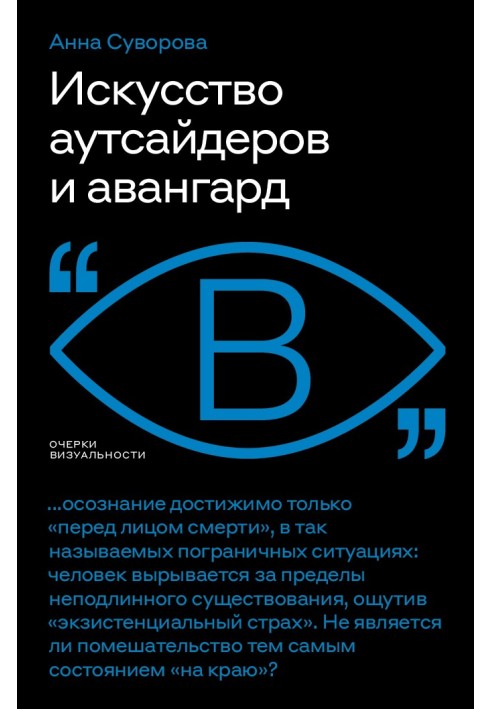Outsider art and the avant-garde
 Instant download
Instant download
after payment (24/7)
 Wide range of formats
Wide range of formats
(for all gadgets)
 Full book
Full book
(including for Apple and Android)
“During the whole day I imagined that I would go crazy, and I was even pleased with this thought, because then I would have everything I wanted,” exclaims the inspired Oskar Schlemmer, one of the professors of the legendary Bauhaus, after visiting the art collection of psychiatric patients in Heidelberg. In the era of the avant-garde, marginality, outsiderness, madness, strangeness, and alogism become the new “objects of desire.” The crisis of the canon of classical aesthetics has led to the fact that new movements in art began to include previously unnoticed creativity of outsiders into their metanarrative. Why did the works of the mentally ill, social outcasts and visionaries turn into significant artistic phenomena? How did the texts and works of avant-garde artists expand understanding of the boundaries of art? Art critic Anna Suvorova explores the stages of this process in her book. First, the Expressionists used outsider motifs and images, then the Surrealists’ appeals to alogism and ideas of “madness” led to the rejection of the stigmatization of mental illness, and then, finally, institutional practices, from Art Brut and the work of Jean Dubuffet to the exhibitions of the 2010s, finally legitimized “strange art.” Anna Suvorova is an art historian and cultural critic, Doctor of Art History, Associate Professor of the Russian State Pedagogical University. A. I. Herzen and the National Research University Higher School of Economics.
Data sheet
- Name of the Author
- Анна Суворова Ароновна
- Language
- Russian
Reviews
Вражаюче дослідження меж мистецтва та аутсайдерства!
Книга "Мистецтво аутсайдерів та авангард" Ганни Суворової є справжнім відкриттям для всіх, хто цікавиться мистецтвом та його еволюцією в контексті соціальних змін. Авторка майстерно аналізує, як маргінальні голоси, які раніше залишалися поза увагою, стали важливими елементами сучасного мистецького дискурсу. Її дослідження охоплює широкий спектр тем, від експресіонізму до сюрреалізму, і показує, як божевілля та аутсайдерство стали новими об'єктами бажання в епоху авангарду. Суворова не лише надає історичний контекст, але й глибоко занурюється в психологічні аспекти творчості, що робить цю книгу неймовірно цінною для мистецтвознавців, студентів та всіх, хто прагне зрозуміти, як мистецтво може відображати і трансформувати суспільство. Рекомендую всім, хто хоче розширити свої горизонти в мистецтві та зрозуміти, чому "дивне мистецтво" стало таким важливим у наш час!













